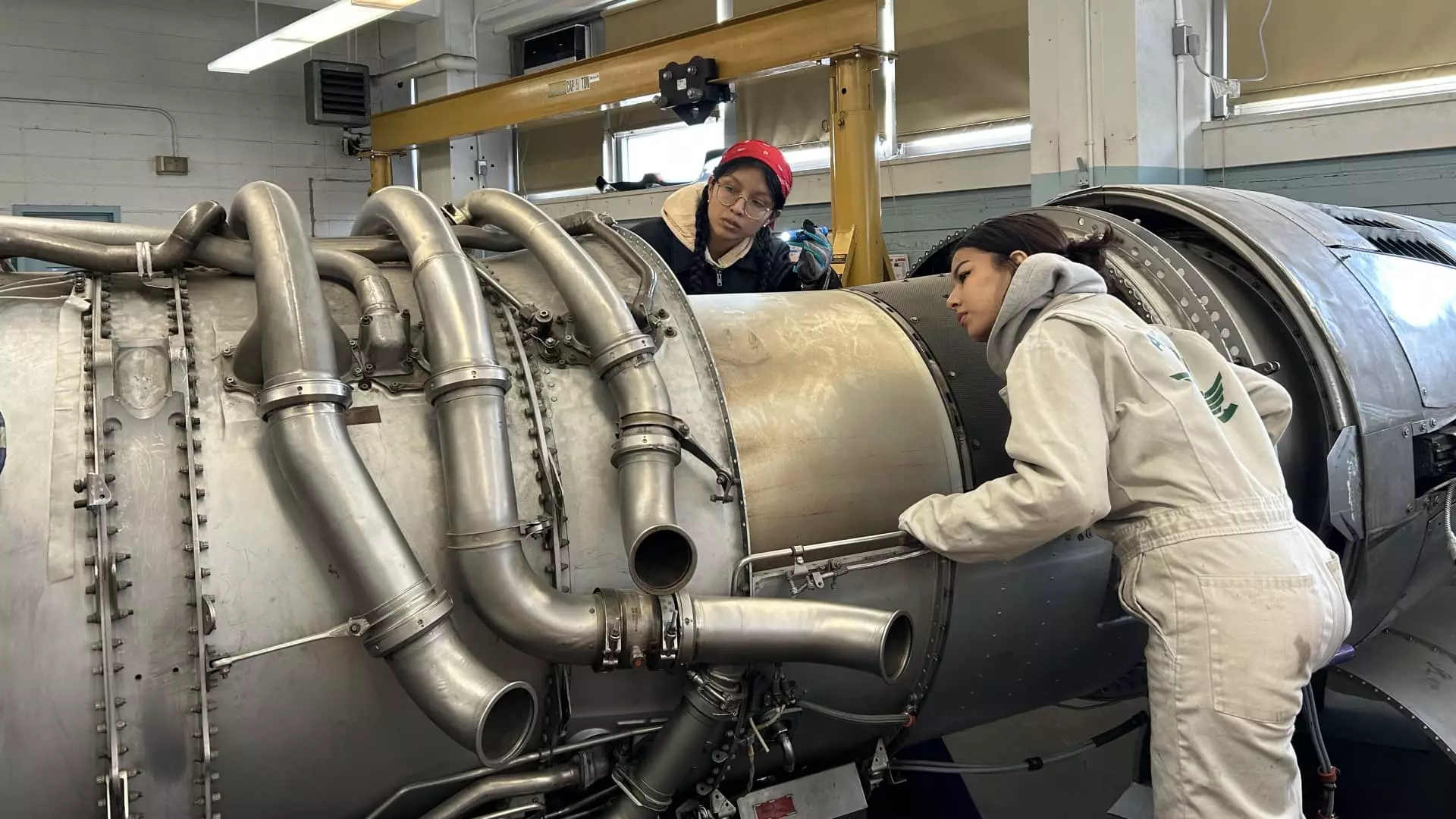The aviation industry in the United States stands at a pivotal juncture. As President Donald Trump and various stakeholders laud efforts to revitalize manufacturing jobs, a pressing crisis looms beneath the surface: the shortage of skilled labor, particularly in aviation. According to a 2024 report by the Aviation Technician Education Council and Oliver Wyman, a staggering 25,000 aircraft technicians will be needed by 2028, highlighting a critical gap in the workforce. The average age of certified aircraft mechanics is 54, and alarmingly, 40% of them are over the age of 60. Yet, while there is a burgeoning demand for skilled workers, the pipelines for training and retaining this talent have not kept pace.
It is naive to think that the problems plaguing the aviation sector can be resolved solely through corporate initiatives or governmental endorsements. The aging workforce doesn’t just lack the numbers; it lacks the incentive structure that younger generations demand. In a world where technology and labor have evolved, attracting fresh talent requires more than just catchy slogans about “Making America Great Again.” It necessitates a fundamental shift in how we perceive these careers and invest in developing them.
Challenges in Retaining and Attracting Talent
For airlines and manufacturers like GE Aerospace, finding and retaining skilled workers poses a daunting task. While wages are reportedly increasing—with median pay for aircraft technicians now around $79,140 annually, far exceeding the national median income—the sentiment in the industry reflects deeper issues. For many, the financial incentive may not be enough to outweigh the cumbersome process of obtaining FAA licenses or the unattractive perception of the jobs themselves.
Christian Meisner, GE Aerospace’s Chief Human Resources Officer, emphasized a retention strategy lately in vogue, but it feels almost reactive rather than proactive. The industry lost a considerable amount of experienced talent during layoffs and buyout offers during the COVID-19 pandemic, leaving a void that companies are only now beginning to fill. The question remains: why are these roles seen as less desirable? The answer lies in a mixture of outdated perceptions and societal aspirations that values flashy tech jobs over traditional skilled trades.
Reimagining the Appeal of Skilled Trades
To fundamentally alter the course of this crisis, the aviation sector must reframe the narrative surrounding skilled labor. High-tech advancements have seeped into manufacturing, making roles like aircraft maintenance not just jobs, but compelling career paths with significant growth potential. As highlighted by American Airlines’ COO, new technicians can expect salaries to reach as high as $130,000 within nine years, yet many in the industry still struggle to communicate these lucrative prospects effectively.
Schools like Aviation High School in Queens are stepping up to fill the void, offering students an alternative to the traditional four-year college degree route. Yet, these initiatives need to be buoyed by strong alliances with industry leaders who must do more than just pay lip service to the importance of skilled labor. Enhanced outreach and awareness campaigns aimed at younger students, starting at the junior high level, may help transform industry image and increase interest.
Education cannot be an isolated endeavor; it needs to be an ongoing partnership between educational institutions and corporations. Students like Sam Mucciardi, who express a desire to work in aviation, should be met with structured apprenticeship opportunities and clear pathways into meaningful careers. It is this synergy that can ultimately revitalize the aviation workforce.
The Implications for the Aviation Sector and Beyond
The aviation industry’s challenges are symptomatic of a more extensive issue plaguing many sectors in America. As more companies express a desire to reignite their manufacturing capabilities, the workforce shortages could extend beyond aviation, affecting everything from construction to textiles. Gordon Hanson, an urban policy professor, aptly notes that while the fetishization of manufacturing exists, the reality is that workers tend to remain in localized job markets. This stasis further complicates recruitment efforts and could spell long-term ramifications for many industries.
As the U.S. grapples with a 4.2% unemployment rate and growing concerns about workforce sustainability, it must engage in a candid dialogue; what will it take to create a labor market that attracts and retains skilled workers? It is high time we move away from viewing manufacturing as an anachronism and towards embracing it as a crucial pillar of a robust economy. Failure to act on these fronts could jeopardize the safety, reliability, and competitiveness of the aviation industry. The hour is late, and drawing lines in the sand may not be enough; what’s needed is a collective commitment to ensure that skilled labor remains a vital, respected, and lucrative career choice for generations to come.



Leave a Reply